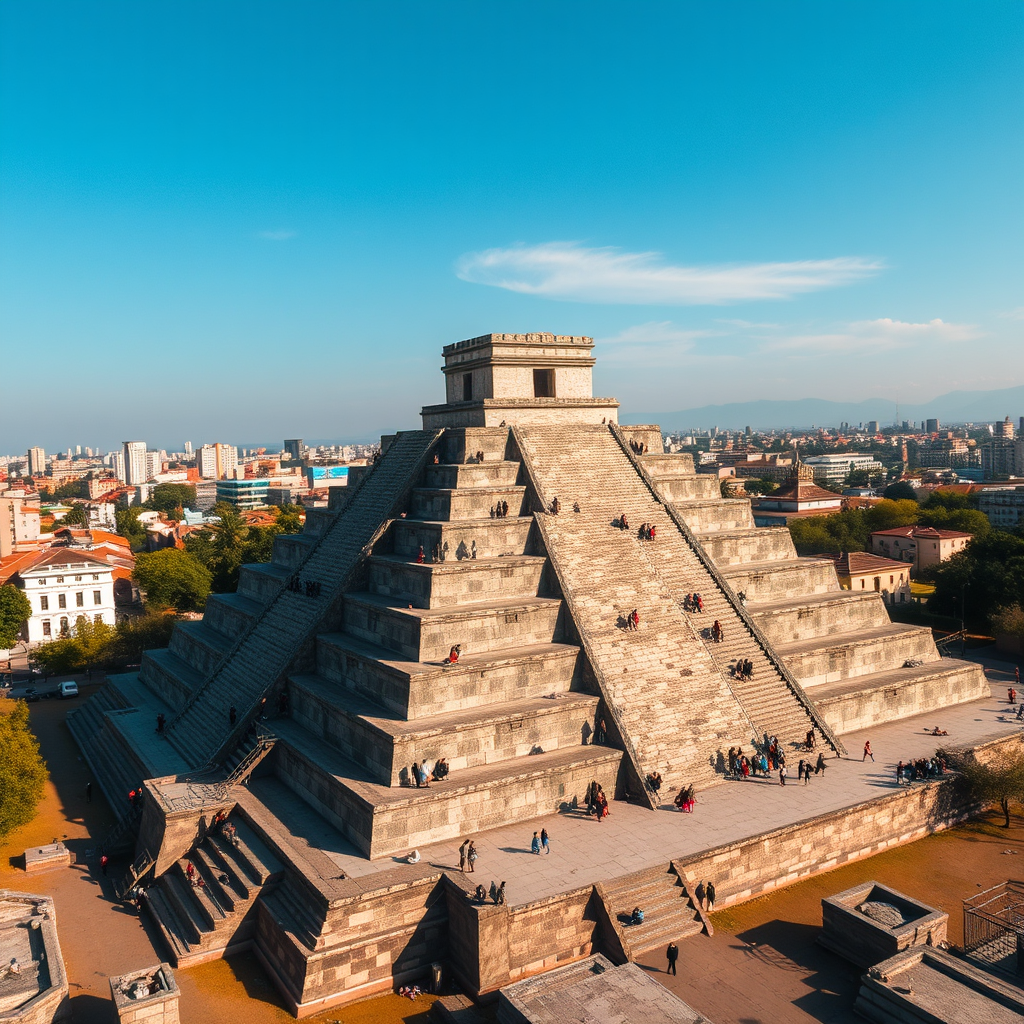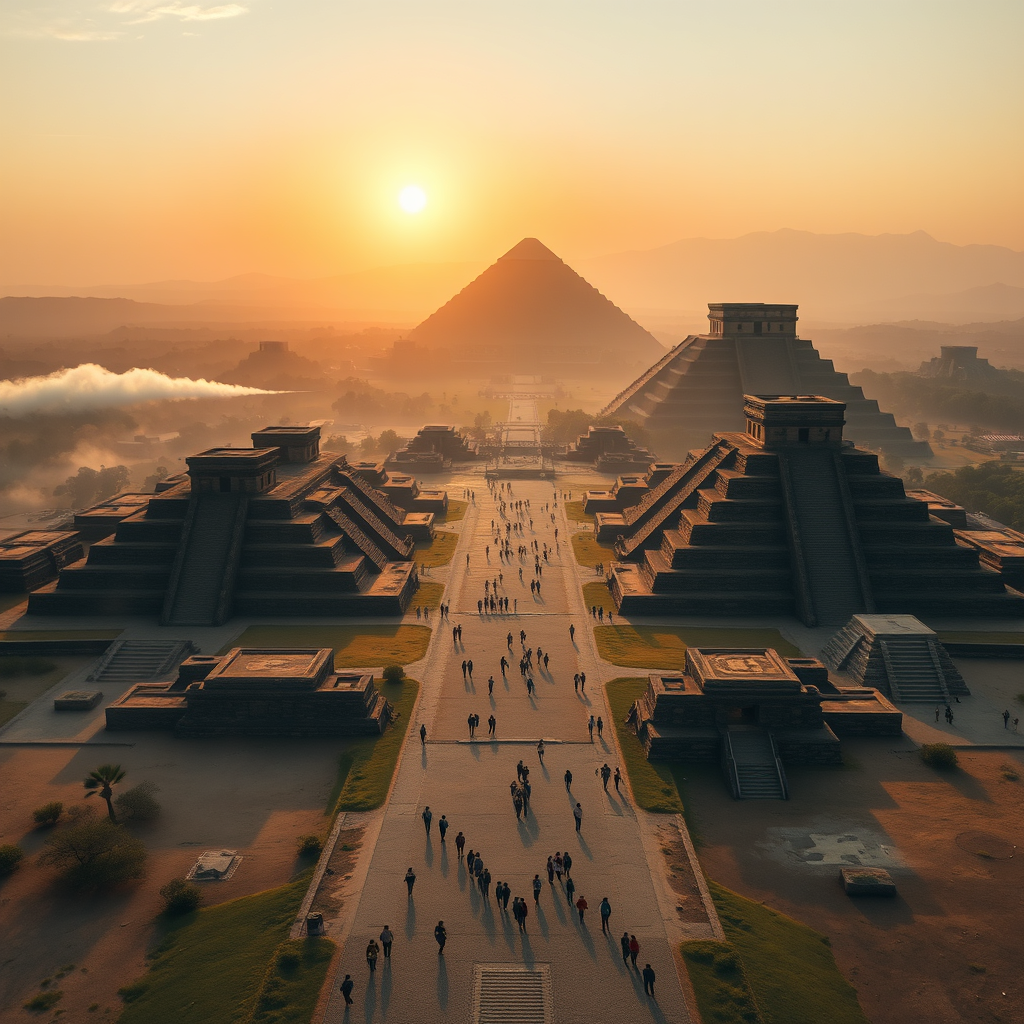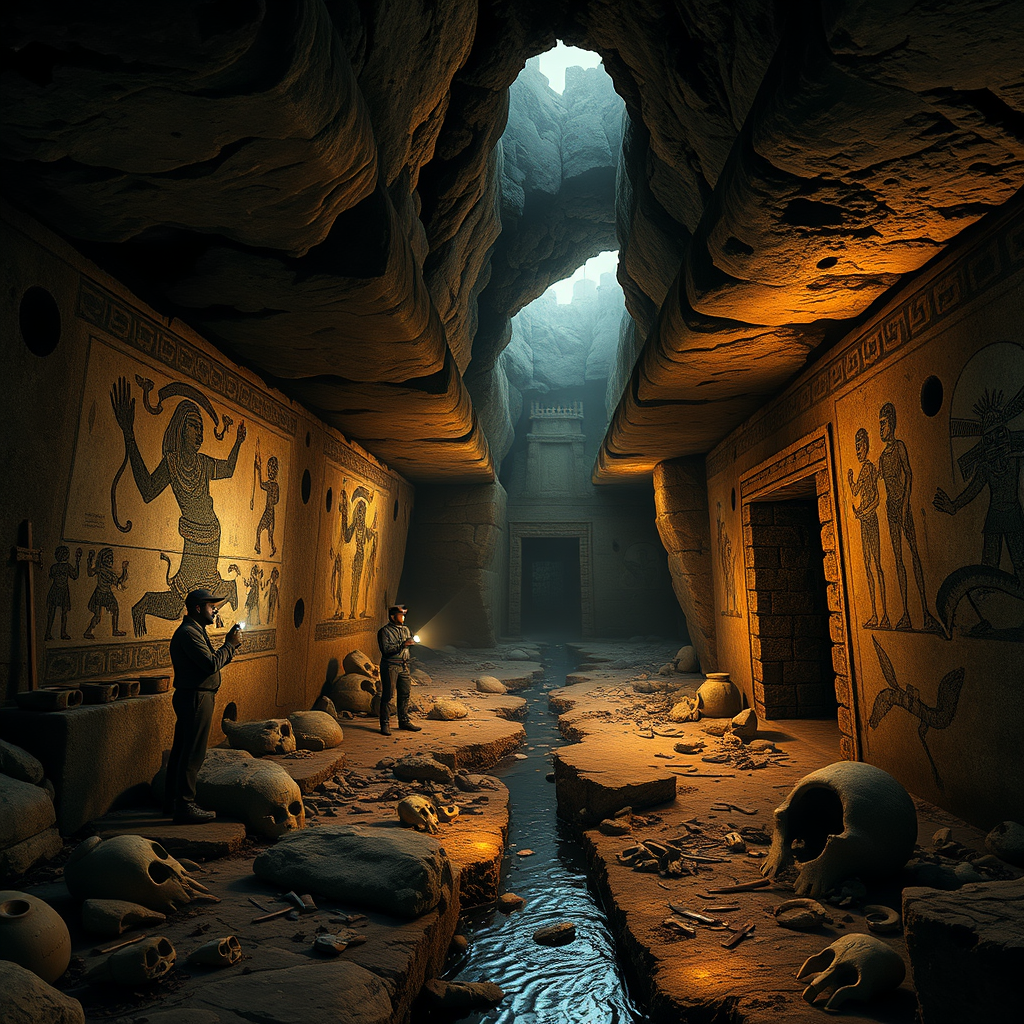The Aztec Ruinal that the world is paying attention to
Have you ever felt the goosebumps rise as you stand amid the echoes of an ancient civilization, where every stone tells a story and each temple whispers secrets from centuries past? If you crave a travel experience that transcends the usual tourist tracks, you're about to embark on an inspiring journey! Join me as we unlock the mystical pulse of the Aztec Empire, exploring ruins that have recently stolen the world's attention. Whether you're a history buff, an avid photographer, or a soul-searcher in quest of wonder, these Aztec sites promise to ignite your curiosity and transform the way you see travel. Let's dive into a world where legends still live, breathtaking vistas await at every turn, and every visit leaves an unforgettable mark on your spirit.

Imagine stepping into the vibrant heart of ancient Tenochtitlan, where the Templo Mayor stood as the spiritual and political center of the Aztec world. This awe-inspiring temple, whose name means "Great Temple," was more than just a monument; it was the living pulse of Aztec civilization.
The Templo Mayor was dedicated to two powerful deities: Huitzilopochtli, the god of war and the sun, and Tlaloc, the god of rain and fertility. Each god had his own shrine atop the twin pyramids, symbolizing the dual forces that shaped Aztec life. The temple's design itself reflected the Aztecs' profound understanding of balance, nature, and cosmic order.
Why does the Templo Mayor matter today? Beyond its historical grandeur, the Templo Mayor offers us invaluable insights into the Aztec worldview and their relationship with the environment, society, and the divine. The site is a testament to human creativity, resilience, and the enduring quest for meaning.
- Architectural Marvel: The Templo Mayor was rebuilt multiple times, each layer revealing the Aztecs' evolving architectural mastery and their response to natural and political changes.
- Cultural Legacy: The temple was the stage for grand ceremonies, sacrifices, and festivals that united the Aztec people and reinforced their identity.
- Archaeological Treasure: Modern excavations have uncovered thousands of artifacts, from intricate stone carvings to offerings of gold, jade, and even the remains of rare animals.
Life Lessons from the Templo Mayor
What can we learn from this ancient site?
First, the Aztecs teach us the importance of honoring our roots and respecting the forces—both seen and unseen—that shape our lives.
The Templo Mayor reminds us that every society is built on layers of history, each one influencing the next.
By studying the Aztecs' dedication to their gods and community, we can reflect on our own values and the rituals that give our lives meaning.
| Aspect | Aztec Practice | Modern Insight |
|---|---|---|
| Spirituality | Dual shrines for balance | Seek harmony in life |
| Community | Shared rituals and festivals | Value collective identity |
| Resilience | Rebuilding after disasters | Adapt and grow from challenges |
Visiting the Templo Mayor today is a powerful experience. As you walk among the ruins in the heart of modern Mexico City, you can almost hear the echoes of ancient chants and feel the energy that once animated this sacred place. The site is a bridge between past and present, inviting us to explore our own connections to history, culture, and spirituality.
Key Takeaways:
- The Templo Mayor was the symbolic and literal center of Aztec life.
- Its dual shrines represent the balance between opposing forces.
- Modern discoveries at the site continue to reshape our understanding of Aztec civilization.
- By reflecting on the Templo Mayor, we gain inspiration to honor our heritage, seek balance, and build resilient communities.
Keywords: Templo Mayor, Aztec ruins, ancient Mexico, spirituality, cultural heritage

Imagine walking down a broad, ancient boulevard, flanked by towering pyramids and mysterious ruins. This is Teotihuacan, one of the most captivating archaeological sites in the world and a UNESCO World Heritage treasure. Once the beating heart of a powerful civilization, Teotihuacan’s Avenue of the Dead and its majestic pyramids continue to inspire awe and curiosity in modern visitors.
The Avenue of the Dead is the central axis of Teotihuacan, stretching for over two kilometers. This grand avenue was more than just a road—it was the ceremonial and spiritual spine of the city. As you stroll along its length, you can almost feel the echoes of ancient processions, bustling markets, and the vibrant life that once filled this metropolis.
At either end of the avenue stand the Pyramid of the Sun and the Pyramid of the Moon, two of the largest and most impressive structures in pre-Columbian America. The Pyramid of the Sun, in particular, is a marvel of engineering, built from millions of tons of stone and aligned with cosmic events. Climbing its steep steps, you are rewarded with panoramic views of the entire site—a powerful reminder of human ambition and creativity.
But Teotihuacan is not just about ancient stones. Recent discoveries and ongoing restoration efforts have breathed new life into the site. Archaeologists have uncovered vibrant murals, intricate carvings, and hidden tunnels that reveal the city’s complex social and religious life. These findings challenge our assumptions and invite us to see Teotihuacan not as a relic, but as a living story still unfolding.
- Cultural Heritage: Teotihuacan is a symbol of Mexico’s rich indigenous history and a source of national pride.
- Archaeological Insights: The site provides invaluable clues about urban planning, astronomy, and social organization in ancient Mesoamerica.
- Inspiration for Modern Life: The city’s resilience and grandeur remind us of the importance of community, innovation, and respect for the past.
Visiting Teotihuacan is more than a tourist experience—it’s a journey through time that can change the way you see the world. By exploring its avenues and pyramids, you gain a deeper appreciation for the ingenuity and spirit of humanity. The lessons of Teotihuacan—about adaptation, collaboration, and reverence for the cosmos—are as relevant today as they were centuries ago.
| Feature | Historical Significance | Modern Insight |
|---|---|---|
| Avenue of the Dead | Ceremonial center and urban axis | Urban planning, community rituals |
| Pyramid of the Sun | Largest structure, solar alignment | Engineering, cosmic awareness |
| Pyramid of the Moon | Religious ceremonies, lunar symbolism | Spiritual connection, art |
| Murals & Tunnels | Social, religious, and artistic life | Hidden stories, cultural diversity |
In the end, Teotihuacan stands as a testament to the enduring power of human imagination. Whether you are a history enthusiast, a traveler, or someone seeking inspiration, this ancient city offers lessons that can enrich your life and broaden your perspective.
Keywords: Teotihuacan, Avenue of the Dead, Pyramid of the Sun, ancient civilization, cultural heritage

Among the many remarkable Aztec ruins, Tlatelolco stands out as a site where the pulse of ancient commerce and the shadow of tragedy are forever intertwined.
Nestled in the heart of modern Mexico City, Tlatelolco was once the bustling twin city of Tenochtitlan, famous for its vibrant marketplace and pivotal role in Aztec civilization.
For history enthusiasts and travelers alike, exploring Tlatelolco offers a rare window into the economic, social, and spiritual life of the Aztecs.
Tlatelolco's market was legendary—at its peak, it attracted over 60,000 people daily.
Merchants from distant regions gathered here, trading everything from cacao beans and obsidian blades to vibrant textiles and precious feathers.
The sheer scale and organization of the market reflected the Aztecs' sophisticated economic system, and its echoes can still be felt in Mexico's lively markets today.
Why does this matter for us?
Understanding Tlatelolco's trade legacy inspires us to appreciate the power of commerce in shaping cultures.
It reminds us that markets are not just places of exchange, but also of connection, innovation, and cultural blending.
In a globalized world, the lessons of Tlatelolco encourage us to value diversity and collaboration in our own communities.
Yet, Tlatelolco is also a site of profound sorrow.
In 1521, during the Spanish conquest, it witnessed the final, bloody battle that ended the Aztec Empire.
Thousands perished as the city fell, marking a turning point in world history.
The Plaza de las Tres Culturas, where the ruins stand today, is a powerful symbol of Mexico's layered past: Aztec, Spanish colonial, and modern.
Life Insight:
Visiting Tlatelolco is a reminder that history is not just about triumphs, but also about resilience in the face of loss.
By reflecting on both the achievements and tragedies of the past, we gain empathy and wisdom to navigate our own challenges.
| Aspect | Ancient Tlatelolco | Modern Relevance |
|---|---|---|
| Trade | Vast, organized marketplace; regional economic hub | Model for urban markets, cross-cultural exchange |
| Tragedy | Site of the Aztec Empire's fall in 1521 | Symbol of resilience, memory, and cultural identity |
| Legacy | Innovative economic and social systems | Inspiration for modern urban planning and community |
- Travel Tip: When visiting Tlatelolco, take time to explore the nearby museums and the Plaza de las Tres Culturas.
They offer context and depth to the ruins, enriching your understanding of Mexico's complex history. - Personal Growth: Let the story of Tlatelolco inspire you to see every marketplace, every gathering, as an opportunity for connection and learning.
- Historical Reflection: Remember that every site of tragedy is also a site of hope and rebuilding. Our present is shaped by how we honor and learn from the past.
Keywords: Tlatelolco, Aztec ruins, trade, tragedy, cultural heritage

Imagine walking through the bustling streets of modern Mexico City, unaware that beneath your feet lies a hidden world—the ancient underworld of Tenochtitlan, the legendary Aztec capital. This vast network of ruins, tunnels, and sacred spaces is not just a marvel of archaeology; it is a gateway to understanding the spiritual and practical lives of the Aztecs.
Why does the underworld of Tenochtitlan matter?
For centuries, the Aztecs believed that the earth was layered, with a mysterious underworld known as Mictlan beneath the surface. Today, as archaeologists uncover hidden temples, ceremonial chambers, and ancient canals, we are beginning to piece together the secrets of this subterranean realm. These discoveries offer profound insights into Aztec cosmology, engineering, and daily life.
What has been found below Mexico City?
- The Templo Mayor tunnels: A series of underground passages beneath the main temple, believed to connect to sacred wells and ritual chambers.
- Buried offerings: Hundreds of ritual objects, including jade masks, obsidian blades, and animal remains, found in hidden vaults.
- Ancient aqueducts: Ingenious water systems that supplied the city and supported its famous floating gardens (chinampas).
- Mythical depictions: Murals and carvings illustrating the journey of souls through the nine levels of the Aztec underworld.
| Discovery | Significance | Modern Insight |
|---|---|---|
| Ritual tunnels | Pathways for priestly ceremonies | Understanding Aztec religious practices |
| Canal systems | Advanced urban planning | Lessons for sustainable city design |
| Buried treasures | Offerings to gods | Insights into Aztec beliefs and values |
How does this impact us today?
Exploring the underworld of Tenochtitlan is more than a historical curiosity. It reminds us of the importance of respecting the layers of history beneath our cities. The Aztecs engineered their world with sustainability in mind, using canals and aqueducts to manage water and support agriculture. Their reverence for the earth and the afterlife can inspire us to look deeper—both literally and metaphorically—at how we build and inhabit our own urban environments.
Key Takeaways:
- The Aztec underworld is a rich source of archaeological and spiritual knowledge.
- Modern Mexico City sits atop layers of history, offering unique opportunities for discovery.
- Learning from Aztec engineering and cosmology can help us design more resilient, sustainable cities.
So next time you visit Mexico City, remember: every step you take may be above a hidden chamber, a sacred tunnel, or a piece of history waiting to be uncovered. The mysteries below are not just relics—they are lessons for the future.